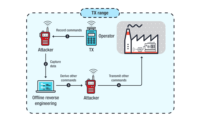A new report from the U.S. Government Accountability Office paints a dire picture of the potential impact of climate change on Superfund sites across the U.S. and concludes the U.S. Environmental Protection Agency is not doing enough to manage these risks and their potential impact on the environment and public health.
GAO recommends EPA clarify how its actions to manage risk at non-federal National Priorities List of Superfund sites align with current agency goals and objectives. “Without clarifying this alignment, EPA cannot ensure that senior officials will take an active role in strategic planning and accountability for managing these risks,” the GAO report concludes.
The report finds that approximately 945, or 60%, of non-federal sites on the National Priorities List are at risk of being negatively affected by weather-related impacts such as storm surges, sea level rise, flooding and wildfires. Moreover, the GAO notes that EPA has omitted the words “climate change” from its agency strategy and planning documents, which could lead to inconsistent approaches to managing risk across the country.
In the agency’s response to the draft circulated in October, Peter Wright, EPA’s assistant administrator of the Office of Land and Emergency Management, agreed with GAO’s conclusion that EPA should standardize its approach to identifying and keeping track of the boundaries of non-federal NPL sites and noted that it has already begun taking steps to do so.
However, the agency disagreed with most of the report’s other conclusions. In a letter to GAO, Wright said the agency performed analyses of sites after the active hurricane season in 2017 and found that the remedies at the sites were “resilient.”
In a Nov. 18 letter to EPA Administrator Andrew Wheeler, Sen. Tom Carper (D-Del.) and other Democratic members of his committee wrote: “The Superfund program is not providing necessary resources and direction to regional officials that would help them assess and respond to site-specific risks due to climate change.”



Post a comment to this article
Report Abusive Comment